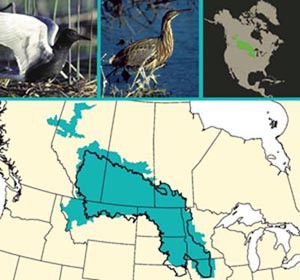After only 1 year, I am still fascinated by the northern prairie: the birds, mammals, plants, wetlands. This ecosystem is both delicate and inviting, harsh and forbidding, depending on the season. A mild winter settles into the prairie this year. Snow is scarce, but the nighttime temperatures in the teens cause the lakes to freeze. People are eager to go ice-fishing, and, with only 4-6 inches of ice, many people walk out with their poles and force the season.A few optimists fell through last week, but soon, when the ice is a few feet thick, locals will pull ice-houses onto the lakes and leave them all winter.
Recently I learned that prairie means meadow. The lowlands of the interior US looked like meadows to the explorers who first saw the tall and short grasslands that stretched between western Indiana and the Rocky Mountains. The northern prairies begin in Canada, and they meander southward through Texas, into Mexico.When I lived along the Colorado Front Range I thought I lived in the foothills; however, I lived right where the prairies meet the mountains. When I lived in southeastern Wyoming, where the vegetation included more sagebrush than grasses, I was also on the prairie. Traveling with my camper one summer, I fell in love with the prairies surrounding Great Falls, MT and stretching northwest into their Rocky Mountain Front region. In North Dakota, I am in wetland prairies that support amazing wildlife.

Northern Prairie
Prairie icons that come to my mind: covered wagons, Indian wars, bison, the Oregon Trail, wheat fields, waterfowl, wetlands, rolling terrain. Personal images include a reedy pond full of Canvas Back ducks, early prairie crocus pushing through the hard soil, flocks of 1000 or more snow geese heading north, rolling fields filled with round hay bales, a foggy river in a snowstorm harboring migrating birds, farmsteads dressed in winter white, the braided course of the Platte River, and a prairie rattler in Colorado that taught me how high I can jump.
I have traveled through the prairies in a car, camper or van, on a train or bus, and overhead on a plane. Were I to judge the prairies by car travel through Kansas, I wouldn’t travel the prairies much more. I am blessed to know the nooks and crannies of the prairie and all its diversity and I want to see more. As I continue to explore, I plan to head straight north, to the beginning of the prairie ecosystem in Canada. Then, I will go straight south, where the prairie meets the Gulf, in the southern US. I will also spend time at the American Prairie Reserve in Northern Montana and at many of the National Wildlife Reserves in the region.
The prairies face environmental threats, of course. Most of the land is now in agriculture and pesticide/fertilizer runoff presents extreme hazards to wildlife. Non-arable land is used for grazing, which comes with its own set of problems when land is not properly managed. Loss of habitat threatens bird populations and invasive plants claim some lands. On the plus side, many of our prairie states, including the Dakotas, Montana, and Wyoming, are sparsely populated and provide a haven for those who prefer to live away from the big cities.
Today, they leading edge of a storm blows in from the Pacific. Now the system only kicks up surface winds; tomorrow snow will fall. Daytime highs in the 40s will drop to the thirties then twenties by next week. Nighttime lows should hover near zero. The mild winter will give way to a bully storm. We are in North Dakota after all and bitter cold is just one of it’s personalities. No need to plan trips to Bismarck or Jamestown. We will be hunkered down in our little hamlet, waiting for the hungry, ice-bound fish to bite at the nearest fishing hole.
I’m fascinated by your interest in the prairies. I grew up in northern Alberta (up from Montana), and the prairie spirit has never left me. I haven’t been there for at least twenty years, but no matter what the weather is like in southern British Columbia, where I live now, I always think, “Wonder what it’s like on the prairie?” As you may know, the ecology in that part of the country is delicate, and in trouble due to to huge oil interests. I worry about it. I am writing about my childhood recollections of the prairie in my blog with the hope that I can help preserve the memories of what it was really like during the 1940s and 1950s, when everything was fresh and unspoiled.
The prairie spirit is incredible. I hope to drive into Canada next summer, straight north.